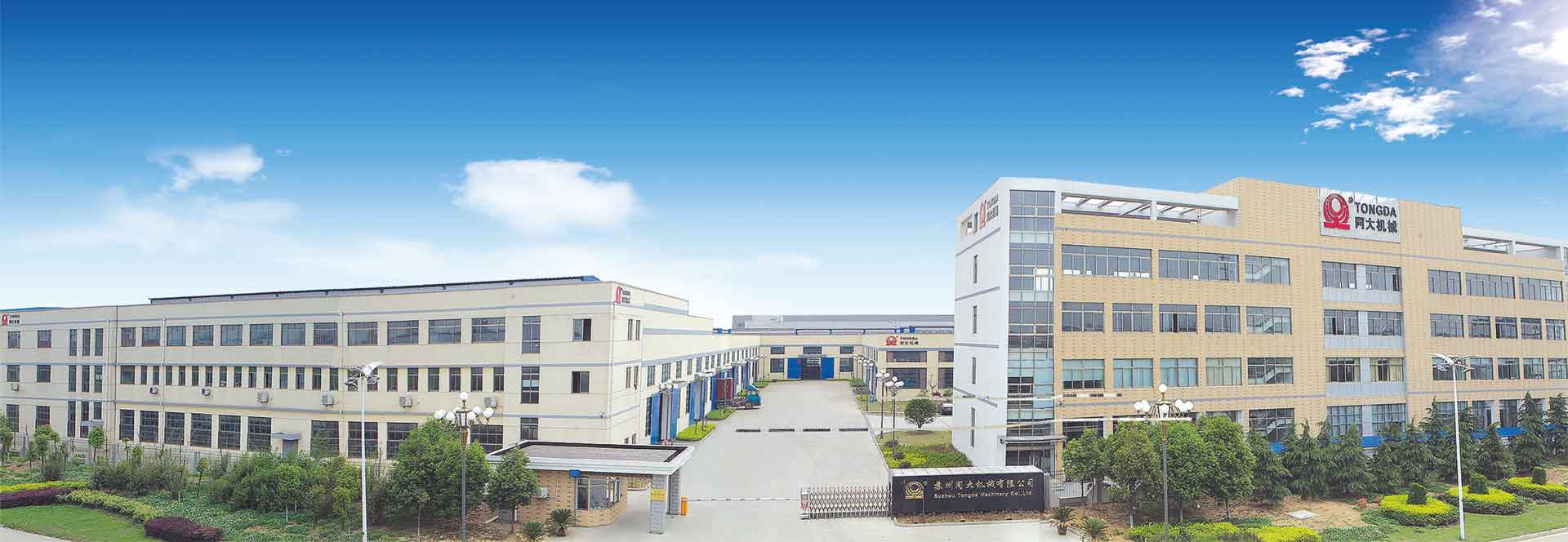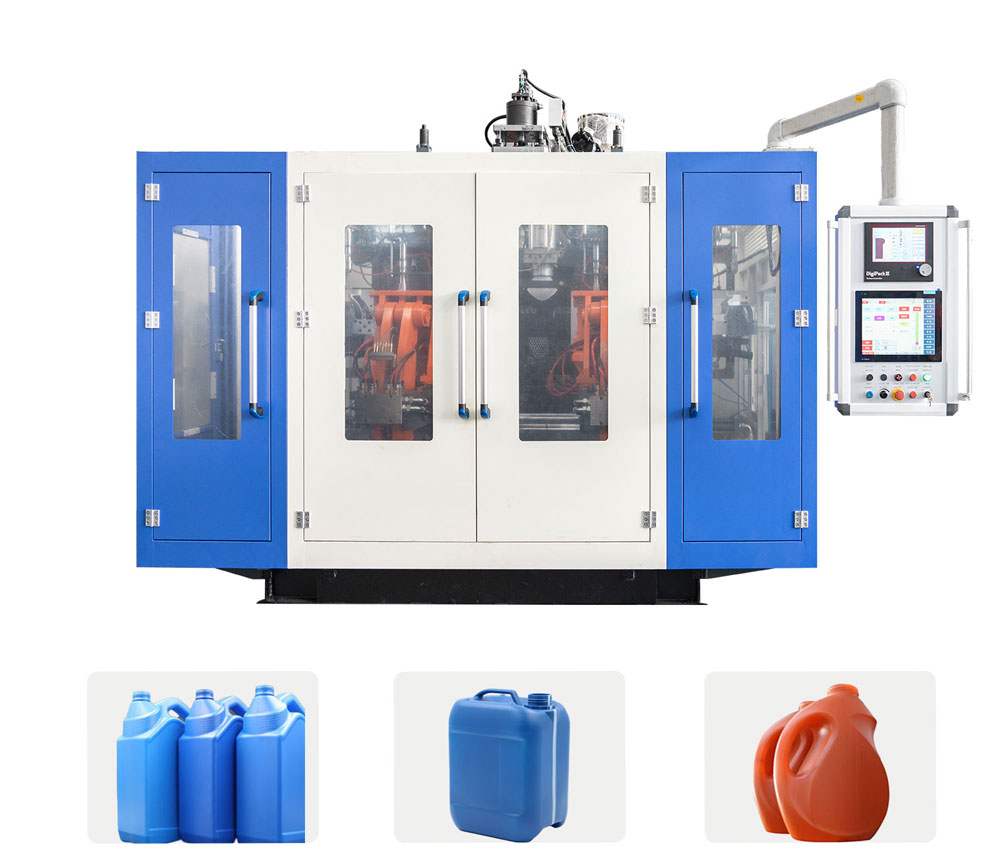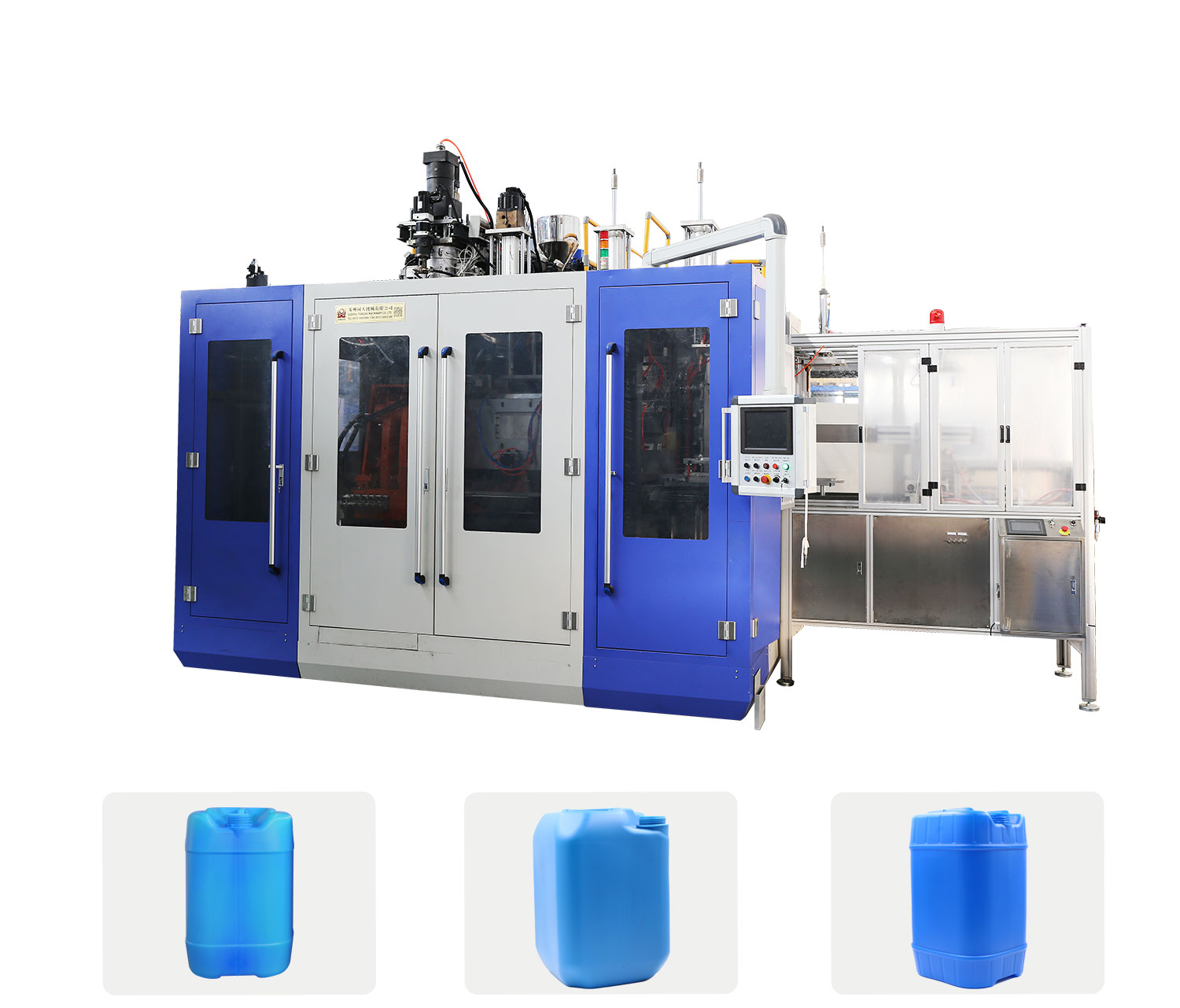With the rapid development of blow-moulded products production industry, people have higher and higher requirements for the appearance and performance of blow-moulded products. In this paper, the deformation defects of blow moulded products are analyzed, and the solutions are put forward for the reference of the industry.
Deformation of blow-moulded products refers to its external shape deviating from the shape of die cavity, or convex or concave, or longitudinal or radial, or local shape deviation. It is one of the common defects of blow-moulded products, and it is also a comprehensive and difficult problem to deal with. The degree of deformation and excellent performance of blow moulded products is one of the important indexes for evaluating product quality. Because the deformation of blow-moulded products has a great impact on the production cost, more and more attention has been paid by the industry.
Analysis and Solution of Deformation Defects of Blow Molded Products: The bigger the deformation degree of blow-moulded products is, the lower their appearance satisfaction and service performance will be, and the products will be discarded if they are serious. Deformation of blow moulded products is not only harmful to the quality of products, but also harmful to the output and production cost of blow moulded products. Therefore, the solution of deformation defect of blow moulding products is an important topic for each plastic processing enterprise to discuss in technology. There are many reasons for the deformation of blow-moulded products. It is not enough to solve the problem only by adjusting the process parameters. Based on the analysis and summary of long-term practical experience and relevant data, the thermophysical properties of plastic materials and the conditions and parameters of blow molding process have different effects on the deformation of blow-moulded products, which must be considered comprehensively and solved reasonably. Effect of Thermophysical Properties of Materials on Deformation:
(1) The use of cyanide pigments in blowing plastics processing formula will affect the crystallinity of polyethylene and lead to product deformation;
(2) Primary color blow-moulded products produced by raw materials without any pigments are not easy to deform and can improve the quality and output of products.
(3) The use of plastics with low melting point and good fluidity can improve the quality and output of products because of its small shrinkage rate, fast cooling and not easy to deform.
Effect of Wall Thickness Gap and Cooling on Deformation of Products:
(1) The structural design of blow-moulded products directly affects the wall thickness gap and cooling of products. Large wall thickness gap leads to large cooling speed gap and deformation.
Where the transition part of the product structure changes suddenly, the wall thickness is small, whereas the wall thickness is large. Therefore, the structural transition part of blow moulded products needs smooth transition to avoid sharp edges and sharp corners. If the product structure is special and the wall thickness is different, the cooling should be strengthened at the thick wall, and the cooling circuit of the die should be set according to the cooling requirements.
(2) The bigger the gap between the longitudinal wall thickness and the radial wall thickness of blow-moulded products, the easier the deformation is. The shrinkage caused by the closing line position of blow-moulded container products is more serious than that of the adjacent position, which is that the cooling speed of thicker area is much slower than that of the surrounding area. Different cooling rates lead to different shrinkage and deformation. This defect is best solved by servo longitudinal wall thickness control and servo radial wall thickness control at the same time, but the equipment cost is high. The radial wall thickness control can also be replaced by the modification of the die core, but the effect is not good. For small and medium-sized blow-moulded containers with flat and square shapes, the wall thickness difference of blow-moulded products can be reduced by configuring the size of the die and the core die slightly larger, so as to achieve the shrinkage balance and solve the deformation defects.
Effect of Forming Technology on Deformation:
(1) Extruder barrel temperature, die temperature, die temperature can not be too high, high temperature will lead to slow cooling of blow-moulded products, easy to deform;
(2) Insufficient cooling time leads to non-uniform cooling and deformation of blow-moulded products after extrusion.
(3) According to the shape of the product, the servo wall thickness curve is fine adjusted to make the product wall thickness as uniform as possible.
(4) Water chiller is used to supply water to the mould for circulating cooling to improve the cooling effect.
(5) The inappropriate adjustment of the parameters of the opening stroke will cause the product to be stretched and deformed when the opening die is opened.
Effect of bad demoulding on deformation
(1) Inadequate demoulding inclination of blow-moulded container concave position (below handle, bottom groove, etc.) will lead to drawing deformation during opening;
(2) Poor cooling at the mouth of blow-moulded container or too long flying edge at the mouth will lead to drawing deformation during opening;
(3) Different sand-blasting effects on both sides of blow-moulded container mould will lead to drawing deformation when products are affixed to the better sand-blasting side mould.
Effect of uneven force on deformation of ejector : In the production of blow-moulded sheet products, it is generally necessary to design ejection device on the die. The uneven ejection force will deform the product. In the design of ejection device, the stress should be balanced with the demoulding resistance. It would be better to combine pneumatic pressure or hydraulic pressure with machinery.
Effect of premature sealing of mouth on deformation: The newly produced products have not yet been fully cooled. If the counterparts are fully sealed too early, the products will be deformed due to different cooling rates and atmospheric pressure. Effect of Stress on Deformation: Residual stress, shear stress and cooling stress in the process of blow moulding can also cause deformation defects of blow moulded products. Because of its complexity, it is not explained in detail here.
Conclusion: Different degrees of influence. The treatment of deformation defects of blow moulded products must be considered comprehensively and solved reasonably, so as to provide strong guarantee for the quality, output and cost of blow moulded products.
Deformation of blow-moulded products refers to its external shape deviating from the shape of die cavity, or convex or concave, or longitudinal or radial, or local shape deviation. It is one of the common defects of blow-moulded products, and it is also a comprehensive and difficult problem to deal with. The degree of deformation and excellent performance of blow moulded products is one of the important indexes for evaluating product quality. Because the deformation of blow-moulded products has a great impact on the production cost, more and more attention has been paid by the industry.
Analysis and Solution of Deformation Defects of Blow Molded Products: The bigger the deformation degree of blow-moulded products is, the lower their appearance satisfaction and service performance will be, and the products will be discarded if they are serious. Deformation of blow moulded products is not only harmful to the quality of products, but also harmful to the output and production cost of blow moulded products. Therefore, the solution of deformation defect of blow moulding products is an important topic for each plastic processing enterprise to discuss in technology. There are many reasons for the deformation of blow-moulded products. It is not enough to solve the problem only by adjusting the process parameters. Based on the analysis and summary of long-term practical experience and relevant data, the thermophysical properties of plastic materials and the conditions and parameters of blow molding process have different effects on the deformation of blow-moulded products, which must be considered comprehensively and solved reasonably. Effect of Thermophysical Properties of Materials on Deformation:
(1) The use of cyanide pigments in blowing plastics processing formula will affect the crystallinity of polyethylene and lead to product deformation;
(2) Primary color blow-moulded products produced by raw materials without any pigments are not easy to deform and can improve the quality and output of products.
(3) The use of plastics with low melting point and good fluidity can improve the quality and output of products because of its small shrinkage rate, fast cooling and not easy to deform.
Effect of Wall Thickness Gap and Cooling on Deformation of Products:
(1) The structural design of blow-moulded products directly affects the wall thickness gap and cooling of products. Large wall thickness gap leads to large cooling speed gap and deformation.
Where the transition part of the product structure changes suddenly, the wall thickness is small, whereas the wall thickness is large. Therefore, the structural transition part of blow moulded products needs smooth transition to avoid sharp edges and sharp corners. If the product structure is special and the wall thickness is different, the cooling should be strengthened at the thick wall, and the cooling circuit of the die should be set according to the cooling requirements.
(2) The bigger the gap between the longitudinal wall thickness and the radial wall thickness of blow-moulded products, the easier the deformation is. The shrinkage caused by the closing line position of blow-moulded container products is more serious than that of the adjacent position, which is that the cooling speed of thicker area is much slower than that of the surrounding area. Different cooling rates lead to different shrinkage and deformation. This defect is best solved by servo longitudinal wall thickness control and servo radial wall thickness control at the same time, but the equipment cost is high. The radial wall thickness control can also be replaced by the modification of the die core, but the effect is not good. For small and medium-sized blow-moulded containers with flat and square shapes, the wall thickness difference of blow-moulded products can be reduced by configuring the size of the die and the core die slightly larger, so as to achieve the shrinkage balance and solve the deformation defects.
Effect of Forming Technology on Deformation:
(1) Extruder barrel temperature, die temperature, die temperature can not be too high, high temperature will lead to slow cooling of blow-moulded products, easy to deform;
(2) Insufficient cooling time leads to non-uniform cooling and deformation of blow-moulded products after extrusion.
(3) According to the shape of the product, the servo wall thickness curve is fine adjusted to make the product wall thickness as uniform as possible.
(4) Water chiller is used to supply water to the mould for circulating cooling to improve the cooling effect.
(5) The inappropriate adjustment of the parameters of the opening stroke will cause the product to be stretched and deformed when the opening die is opened.
Effect of bad demoulding on deformation
(1) Inadequate demoulding inclination of blow-moulded container concave position (below handle, bottom groove, etc.) will lead to drawing deformation during opening;
(2) Poor cooling at the mouth of blow-moulded container or too long flying edge at the mouth will lead to drawing deformation during opening;
(3) Different sand-blasting effects on both sides of blow-moulded container mould will lead to drawing deformation when products are affixed to the better sand-blasting side mould.
Effect of uneven force on deformation of ejector : In the production of blow-moulded sheet products, it is generally necessary to design ejection device on the die. The uneven ejection force will deform the product. In the design of ejection device, the stress should be balanced with the demoulding resistance. It would be better to combine pneumatic pressure or hydraulic pressure with machinery.
Effect of premature sealing of mouth on deformation: The newly produced products have not yet been fully cooled. If the counterparts are fully sealed too early, the products will be deformed due to different cooling rates and atmospheric pressure. Effect of Stress on Deformation: Residual stress, shear stress and cooling stress in the process of blow moulding can also cause deformation defects of blow moulded products. Because of its complexity, it is not explained in detail here.
Conclusion: Different degrees of influence. The treatment of deformation defects of blow moulded products must be considered comprehensively and solved reasonably, so as to provide strong guarantee for the quality, output and cost of blow moulded products.











